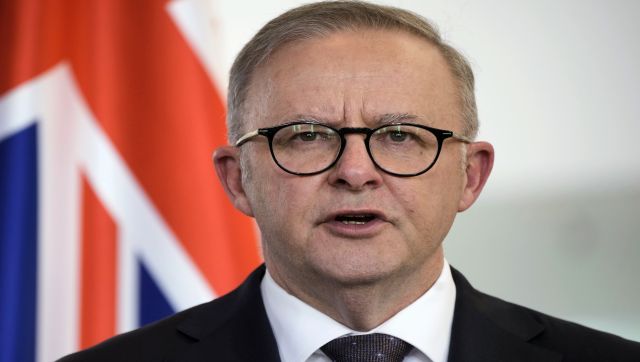Australia has axed its ‘golden visa’ scheme for the super-rich. Canberra said it halted the programme as part of a wider immigration overhaul. The government said it was also delivering ‘poor economic outcomes.’ Australia in December vowed to tighten visa rules for international students and low-skilled workers as it looks to overhaul what it said was a “broken” migration system. Prime Minister Anthony Albanese had said Australia’s migration numbers needed to be wound back to a “sustainable level,” and that “the system is broken.” But what is the ‘golden visa’ scheme? How did it work? And what does this mean? Let’s take a closer look: What happened? Australia has halted its ‘golden visa’ scheme – aka the Business Innovation and Investment Programme. Bloomberg quoted home affairs Minister Clare O’Neil as saying it was part of “many aspects” of Australia’s migration system the government plans to change in order “to create a system which delivers for our country.” “It has been obvious for years that this visa is not delivering what our country and economy needs from a migration system,” O’Neil added.
Introduced in 2012, it offered High Net Worth Individuals (HNIs) a way to gain permanent residency in Australia.
The government at the time said it hoped the wealthy business owners, investors and entrepreneurs would boost the economy by bringing in capital and driving innovation. As per GoldenVisas.com, the scheme allows HNI to apply for the ‘golden visa’ scheme by investing $3.2million in Australia. [caption id=“attachment_12952102” align=“alignnone” width=“640”] Australia in December vowed to tighten visa rules for international students and low-skilled workers as it looks to overhaul what it said was a “broken” migration system. Reuters[/caption] Of this, a maximum of 60 per cent can be invested in non-residential real estate, corporate bonds and shares. A minimum of 10 per cent can be invested in venture capital. Age is no bar for applicants. Under this scheme, applicants don’t need to know English. Applicants can also apply for their permanent residence after five years, as per the website. Why is the government doing this? Because the scheme isn’t working as it is supposed to, according to the government. As per BBC, Canberra has approved thousands of such ‘golden visas’ since 2012. Of these, 85 per cent are Chinese millionaires.
News.com.au reported that over 100,000 overseas migrants had used it to gain residency in Australia.
A government review published in March 2023 found BIIP migrants contributed less to the economy than the average Australian, as the cohort, despite their wealth, tended to be older and earned lower incomes through capital returns on passive investments. The review estimated the lifetime economic contribution of BIIP holders at $395,000, less than half of Australian citizens. As per news.com.au, a 2022 report from the Grattan Institute report found those availing of the programme bring fewer benefits than skilled migrants as they are “older, speak little English, and earn lower incomes.” “Abolishing the BIIP would boost the lifetime fiscal dividend from each year’s migrant cohort by at least $3.7 billion,” the report stated. According to Bloomberg, O’Neil had actually taken aim at the scheme in 2022. “It’s actually costing us on average for every person, because these are people who are generally coming in at quite a late stage of their life, often at the end of their business career and coming to Australia, basically to settle down and retire,” she had said. Similar investment visa schemes have been scrapped in Canada, Britain and Singapore as governments conclude they do not create jobs and could be a means to park speculative money. After coming to power, Australia’s Labor government shifted priority to easing shortages of critical skilled workers. As per BBC, some had long claimed that “corrupt officials” were using the scheme to “park illicit funds” in Australia. The outlet said a 2016 government inquiry said that the scheme had “potential for money laundering and other nefarious activities.” The Australian newspaper reported in 2022 that members of Cambodia’s Hun Sen regime had used this scheme. Clancy Moore, the chief executive of Transparency International Australia, told the BBC, “For far too long corrupt officials and kleptocrats have used golden visas as a vehicle to park their illicit funds in Australia and arguably hide their proceeds of crime.” Others have demanded the government explain itself. [caption id=“attachment_13293392” align=“alignnone” width=“640”] Canberra has approved thousands of such ‘golden visas’ since 2012.
Of these, 85 per cent are Chinese millionaires. News18[/caption] Opposition Immigration spokesman Dan Tehan was quoted as saying by News.com.au, “It just seems that everything they’re doing in immigration at the moment is a mess,” Mr Tehan said. “So we’d like to hear from the Minister for Immigration Andrew Giles or Clare O’Neil today. Have they scrapped it? If so, what are the reasons and what are the serious integrity issues?” According to the website, net migration levels down under are expected to have peaked in 2023. That number, 510,000 is expected to reduce to 375,000 in 2024, and 250,000 in 2025. What does this mean? Experts say it isn’t likely to have much of an impact for Indians. Varun Singh, MD of XIPHIAS Immigration, told Moneycontrol this is because the minimum investment amount is more than what is allowed under the RBI’s Liberalised Remittance Scheme (LRS).
The scheme allows Indians to send abroad Rs 2.5 crore per financial year.
“Therefore, Indian investors need to obtain special permission from the RBI to transfer funds above the LRS limit, which is not easy to get. In fact, we got three rejections last year because the RBI did not approve the fund transfer for the Ultra High Net Worth Individuals (UHNI) who wanted to get residency in Australia,” Singh told the outlet. With inputs from agencies


)

)
)
)
)
)
)
)
)



